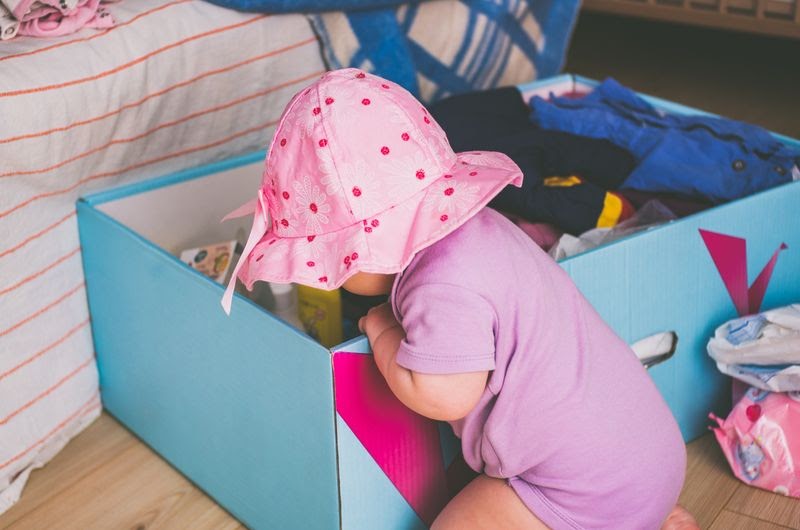
When they’re curious, a child does two things: they blurt out a “what’s that?” or head straight to a certain direction and grab something that piques their interest. Witnessing a moment like this can be pleasing and, at the same time, worrying. Children are naturally curious, but sometimes their curiosity can lead to trouble.
Parents need to know how to properly respond when they do something out of curiosity to raise a safe and responsible child. Whether it be asking questions or grabbing a certain object, this post will give you tips on how to raise your curious little one the right way. Learn about different ways to nurture curiosity and keep your baby safe, such as using a sliding door safety lock and more.
The Dark Side of a Child’s Curiosity
A curious child is a wonderful thing. It’s the perfect time for them to learn new things about this world. However, you should also understand that there are potential risks. Knowing them will help you ensure their utmost safety.
Curious children reach and put almost anything into their mouths. This can cause breathing obstructions, such as choking, suffocation, strangulation, and injuries. Many children suffer from foods or toys blocking their airways, and some of them can be fatal cases.
You might find it difficult or inevitable, but it’s not. As the parent or guardian, you need to be attentive to your child’s movements and learn how to nurture their curiosity. Therefore, it’s not about going against curiosity but redirecting it to a safe and enjoyable learning experience.

6 Tips on Nurturing Your Child’s Curiosity
Naturally, a child is curious because they’re new to this vast world. So many foods are yet to taste, words to say and understand, things to identify, places to travel, games to play, and people to meet. It’s the starting point of how someone learns. Here’s how you can give them a fruitful and safe learning experience.
Give Simple But Stimulating Answers to Their Questions
When your child asks you a question, give them a simple answer. Since they’re still learning new things, parents need to be detailed but not too long when explaining. But sometimes, their questions can be challenging for your knowledge (and patience) too.
In that case, make answering stimulating. For example, instead of saying you don’t know and ending the conversation, say things like “Let’s find out!” or “Let’s see. What do you think?” It will help nurture their curiosity.
Use Child-Friendly Safety Products
A child’s curiosity can bring many physical hazards, which is not good for their delicate body. Fortunately, you can surround them with child safety products to minimize the risk. These include outlet covers, furniture guards, child-proofing gates, and sliding door child safety locks.
Naturally, you want to keep an eye on your baby’s movements all the time, but sometimes you can’t do that. For example, you may have to turn away to prepare a milk bottle or do something urgently. In these cases, safety devices can do the job for you.
Build a Good Learning Environment
Put some effort into building a learning space for your child. Nowadays, school and home are merged into one space because of the pandemic. But don’t let the changes in setting hinder the child’s learning opportunities. Instead, bring a colorful learning environment to your home.
Hang pictures or words on the wall and facilitate an activity involving the whole family. It helps nurture your child’s curiosity and tightens the family bond. Additionally, there are various learning supplies in the market you can choose from. Don’t hold back and provide everything your child needs to expand their knowledge of the world.

Aim for an Open-Ended Approach
Let your child’s curiosity develop through open-ended activities. It’s not always fun to feed them all the answers and step-by-step procedures directly. For example, give them some toy blocks and allow them to figure out what to do on their own.
Another example is reading bedtime stories. While it’s absolutely fine just to read the stories as they are (with your superb storytelling skills), open endings make it more fun and engaging. The child can use their imagination to complete the story, exercising their creative skills.
Redirect the Way They Try to Learn a Skill
Like everyone else, children develop an interest in various activities and try to find a way to achieve them. For example, they see an adult cooking, find it interesting, and try to mimic it. However, kitchen tools are too dangerous for children.
Still, you shouldn’t just dismiss their interest right away. Instead, think of a safe and child-friendly alternative that feeds curiosity. Luckily, many kitchen toys are available in the market. You can switch to them instead and allow your child to do what they want (while still watching what they put into their mouths, of course).
Ease Their Worries With Healthy Tolerance and Encouragement
Let kids be kids. They make mistakes during this phase, and they’re still unaware of it. When dealing with a mess they make, talk about it positively so you don’t scare them away. For example, if they couldn’t draw something well, tell them they’re good at it and encourage them to try again.
Help them understand that nobody is perfect. Help them develop the courage to try until they get better at things. When their curiosity leads to a mess on the bed or the table, tolerate it. Next time, find a solution to prevent recurrent mess at home. One example is building an entire learning space far from fragile house furniture. That way, the mess stays in one place, and it’ll be easier for you to clean them.
Help Your Curious Child In The Safest Way Possible With Ashtonbee
A child’s curiosity is an exciting stage of family life. It’s the time when your little one starts developing independent thoughts and skills little by little. But, at the same time, it needs meticulous supervision to avoid potential risks.
The best way to nurture a child’s curiosity is to allow them to learn to their heart’s content while keeping them safe. Don’t restrict or dismiss their interest and use safety as a reason. Instead, use alternatives like toys and safety products like safety first sliding door locks. That way, you won’t hinder their curiosity and only redirect it to a better experience.
Your child knows no limits, so you need a tool that restricts them from unwanted areas and objects. If you’re looking for the best sliding door safety lock, you might want to consider Ashtonbee’s sliding door child safety lock! It helps prevent your child from entering off-limits places. Moreover, it’s versatile, durable, and easy to install. Keep your curious little one safe and sound while you show them the world in creative ways.



